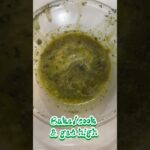YES! YOU! CAN! Apply the Nursing Process (ADPIE) to Teen Substance Abuse!
| thcscout | Facts | No Comments on YES! YOU! CAN! Apply the Nursing Process (ADPIE) to Teen Substance Abuse!
Share
- No bookmark found
Teen substance abuse is a growing public health concern that requires a comprehensive and evidence-based approach. This video explores the application of the nursing process—assessment, diagnosis, planning, implementation, and evaluation—to address substance use among adolescents in the community.
Learn how community health nurses assess a severe community issue, diagnose the circumstance with a nursing diagnosis, plan to intervene, implement an intervention, and evaluate the success of their program.
Apply the nursing process case study and develop interventions to support teens, families, and communities in preventing and managing substance use disorders. Whether you are preparing for your nurse licensure or certification exam, or seeking a deeper understanding of community-based nursing care, this video provides valuable insights into evidence-based strategies that empower nurses to make a meaningful impact.
#TeenHealth
#NursingProcess
#CommunityNursing
#SubstanceAbuse
#NursingEducation
#HarmReduction
#MentalHealthAwareness
#TeenWellness
#DrugEducation
#OpioidCrisis
#HealthPromotion
#PublicHealth
#NursingSchool
#NursingInterventions
QUESTION 1. TEEN DEVELOPMENT AND RISK FACTORS (1+2)

A. Declining academic performance
B. Increased social withdrawal
C. Regularly attending after-school activities
D. Changes in sleeping or eating patterns
E. Expressing future career aspirations
——–



A. Declining academic performance → Correct. Poor grades and lack of engagement in school can indicate underlying issues, including substance use.
B. Increased social withdrawal → Correct. Isolation or sudden changes in social circles can be a red flag.
C. Regularly attending after-school activities → Incorrect. Involvement in structured activities is generally a protective factor.
D. Changes in sleeping or eating patterns → Correct. Disruptions in biological rhythms can result from substance use or its consequences.
E. Expressing future career aspirations → Incorrect. Having clear future goals is typically a protective factor.

National Institute on Drug Abuse (NIDA), “Preventing Drug Use Among Children and Adolescents”
—-
QUESTION 2. COMMUNITY HEALTH NURSING AND INTERVENTIONS (5+3)

A. Providing educational sessions on the dangers of drug use
B. Referring at-risk teens to substance abuse counseling
C. Conducting urine drug screenings for high-risk students
D. Offering group therapy sessions for students who experiment with substances
3. Nursing Process: Diagnosis (4+2)

—-


A. Providing educational sessions on the dangers of drug use → Correct. Primary prevention aims to stop substance use before it starts, and education is a key strategy.
B. Referring at-risk teens to substance abuse counseling → Incorrect. This is a secondary prevention strategy aimed at early detection.
C. Conducting urine drug screenings for high-risk students → Incorrect. This is also secondary prevention and does not prevent initial use.
D. Offering group therapy sessions for students who experiment with substances → Incorrect. This is tertiary prevention, aimed at those already using substances.

U.S. Department of Health and Human Services, “Youth Risk Behavior Surveillance System (YRBSS)”
—–
QUESTION THREE: NURSING PROCESS DIAGNOSIS (4+2)

A. Ineffective coping related to peer pressure
B. Risk for self-harm related to substance use
C. Impaired social interaction related to behavioral changes
D. Knowledge deficit related to long-term consequences of marijuana use
—–


A. Ineffective coping related to peer pressure → Important but not the highest priority.
B. Risk for self-harm related to substance use → Correct. This is a life-threatening concern and takes priority. Substance use is associated with suicidal ideation and risk-taking behaviors.
C. Impaired social interaction related to behavioral changes → May be relevant but is not life-threatening.
D. Knowledge deficit related to long-term consequences of marijuana use → Not as urgent as B.

North American Nursing Diagnosis Association (NANDA), “Nursing Diagnoses: Definitions and Classifications”












